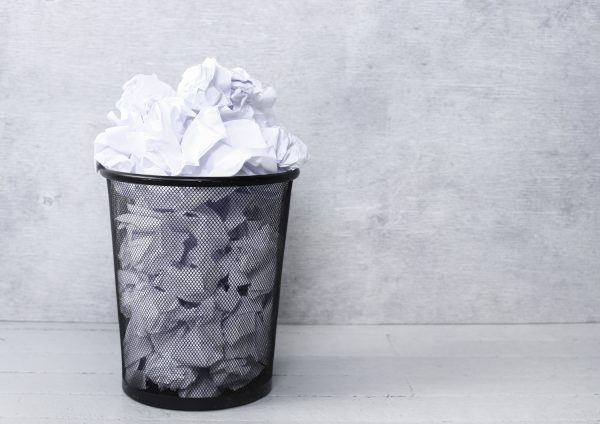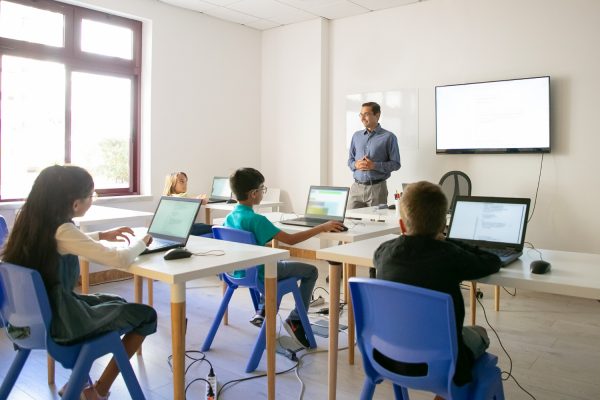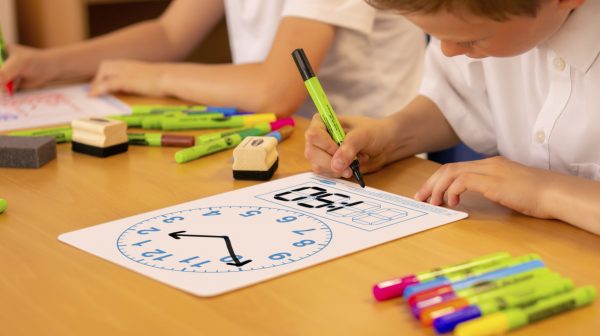World Environment Day is just around the corner (5th June!) and has been a yearly event since 1974.
The purpose of the day is to inspire positive change and address pressing environmental issues. Environmental consciousness is a topic that can easily be incorporated into the curriculum in subjects such as Art, English, and Geography, but what can schools do to minimise their own impact on the environment?
For this blog, we shall be focusing on paper usage in schools.
Worldwide, 4 billion trees are cut down every year to make paper. In the UK alone, we use approx. 12.5 million tonnes of paper each year, with 24 trees being needed to make a single tonne of paper. Whilst we recycle approx. 80% of the paper we use, more still needs to be done.
Due to exercise books, worksheets, templates, tests, report cards, art projects and more, schools account for masses of wasted paper. The average Primary School student produces about 45kg (including food and paper) of waste each year, and the average Secondary School student produces about 22kg.
So, what can we do?

Recycle
An obvious one, but this helps to break the cycle. Recycling paper takes 70% less energy, and creates 73% less air pollution, than making new paper from raw materials.
Ensuring that you have recycling bins available (and clearly labelled with the materials they can accept!) in all key areas is an easy way to encourage both students and staff to recycle more.
In younger settings, you could also implement a scrap paper box. Simply pop any spare paper and non-confidential documents into a box to then be used by younger students in arts and crafts.

Go Digital
Going digital, where possible, in the classroom will help you work more efficiently whilst also reducing the impact on the environment.
Instead of endless sheets of paper, use electronic files and keep electronic records of progress, processes, registers, and other information.
Budgets may limit this one, but using more tablets, laptops and computers in the classroom is a natural way of reducing paper waste. Tablets are a versatile option as they can be moved around the classroom and take up much less space than a computer.

Use Paperless Resources
Videos, music, and interactive games make learning engaging and avoid the creation of unnecessary waste.
Personally, we love using Show-me boards in the classroom. They mimic the design of student exercise books and there are several designs available, so there’s no need to waste time trawling the internet for good quality templates and printing multiple copies of each.
If a permanent record is needed, simply take a photo of the board, or scan it, and then save digitally.

Think About How You Communicate
Re-thinking the way you communicate both internally and externally is another great way to reduce paper usage.
Internally, you can relay messages via email, Skype or Teams, and you can upload any important documents (such as official letters or payslips) to an internal portal, allowing staff to choose if they want to print or not.
Externally, schools are communicating with parents via social media and text more and more. Why not ditch that paper newsletter and send it out electronically instead? Not only will you save paper, you will also be able to monitor open and engagement rates.
Not all families have access to a computer or the internet at home, so discretely offering the option of paper or electronic communications at the start of the school year will ensure all families have access to the same information.

These are just some ways of reducing paper waste in schools, and more can be done with other materials such as glass, plastic and food waste…
What methods can your class come up with?
Sources: World Environment Day and recyclingbins.co.uk.
